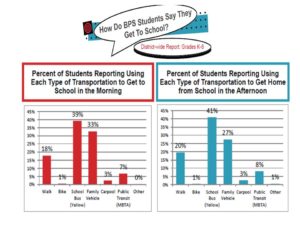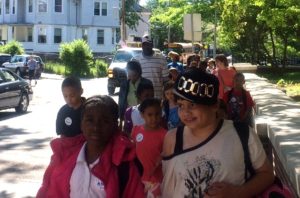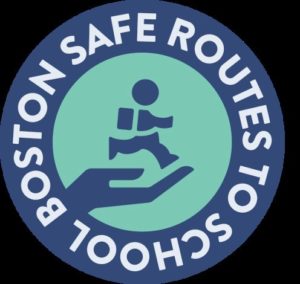The Benefits of Walking & Biking to School
Not long ago, children routinely moved around their neighborhoods by foot or by bicycle, and that was often how they traveled to and from school. In 1969, roughly half of all children walked or biked to school but now that number is only 15%! 
This decline in walking and biking has in part led to a significant rise in obesity and physical inactivity in children and adults. The impact on health and health-care costs is high and will continue to rise dramatically. So how do we remedy this situation and get back to a walking and biking culture?
Well, we know that there is a positive correlation between communities with good bicycle and pedestrian environments, and the level of physical activity of residents. Air quality and traffic congestion around schools is also a factor in determining how students choose to get to school. Not surprisingly, where it is safe, kids are more likely to walk and bike.

Safe Routes to School (SRTS) is a rising international effort to increase safety and promote walking and bicycling to school through the “6Es: engineering, education, enforcement, encouragement, evaluation and equity.” SRTS helps communities reduce traffic congestion and improve neighborhood safety and air quality through infrastructure improvements. SRTS is also helping to address the epidemic of childhood overweight and obesity by increasing children’s daily physical activity levels.
While Boston is referred to the Walkable City and now 7th and 8th grade students use the MBTA for their mode of transport to and from school instead of yellow buses, BPS needs to ensure that students are safe while in transit to and from school. Throughout SY 2015-2016, sixteen BPS schools participated in SRTS programming to promote the benefits of walking and biking to school. With support from the Health & Wellness Department, transportation assessments were done around each school, training was provided on safe methods of navigating the streets of Boston and safe routes infrastructure needs were identified and prioritized.
Promotional events took place throughout the year but on June 8th most schools hosted a special event in celebration of BPS’s first annual #WalkToSchoolDay! Walking School Buses were a common activity and fun events took place at the school for those who arrived by foot or by bike.

As a result of this program, 16 schools have improved the safety for those walking and biking to school, promoted a healthy and sustainable culture, and improved the natural environment by reducing vehicles on the road. It will be exciting to see what BPS schools can do next year to expand on this great work!
Congratulations to the 2015-16 SRTS Participants:
Bates Elementary School
Bradley Elementary School
Condon Elementary School
Ellis Elementary School
Guild Elementary School
Haley K-8 School
Harvard/Kent Elementary
Haynes Early Education Center
Kilmer Upper and Lower Schools
Lyndon K-8 School
Mather Elementary School
Mattahunt Elementary
Quincy Elementary School
Winship Elementary School
Russell Elementary School
UP Academy Dorchester

July 19, 2016 @ 9:47 AM
This article has convinced me to make my future kids walk or bike to school. Hopefully my husband and I will live close to schools when we start having children. If we live close enough, I think I’ll trust my kids to walk home more. Great post!
July 19, 2016 @ 9:57 AM
Glad you found this inspiring. Based on input from residents, planners are spending more and more time on walkable and bikable neighborhoods to facilitate easy and safe pedestrian travel.